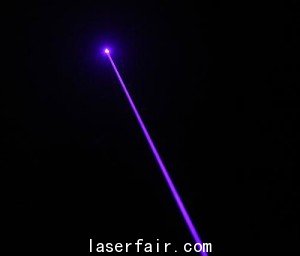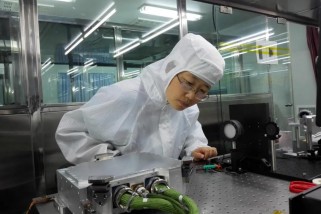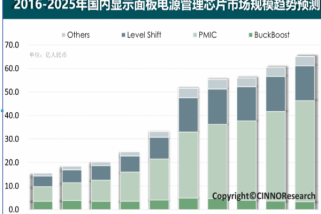美國國防部與(yu) General Atomics航空係統部簽署了一份價(jia) 值3980萬(wan) 美元的訂單,進一步研發大功率激光武器;其最終目標是希望將該係統集成到其戰術飛機的設計中。
高能液態激光領域防禦係統(HELLADS)項目在美國國防部高級研究計劃局(DARPA)的資助下,工作已經開展了幾年;現在該項目眼看已經接近目標值150KW的輸出量。
根據DARPA財政年2012預算文件來看,150KW的示範工程項目已經於(yu) 去年完成;其中有兩(liang) 個(ge) 單元模塊設計的輸出功率超過了34KW。基於(yu) 這些單元結果,下一個(ge) 關(guan) 鍵步驟就是生產(chan) 更多的激光器模塊並將達到150KW的目標輸出量。
在最近的合約中,General Atomics航空係統部將完成該150KW的目標設計;還包括主要在其美國加州總部的電池和熱管理係統的設計。在美國國防部(DoD)一則簡要通報中指出,該項目中的一些重要工作還將在圖森、亞(ya) 利桑那州、阿爾布開克以及美國新墨西哥州的總部進行。
HELLADS係統最關(guan) 鍵的一個(ge) 要求是極大的減少典型高能激光武器的重量;最終目標是使得150KW係統的重量不超過750千克。與(yu) 現有的化學激光器係統相比,HELLADS係統將會(hui) 是一個(ge) 數量級的變更;現有的化學激光器係統效率雖然很高,但是其笨重的體(ti) 積對於(yu) 任何移動部署來說都是很艱難的。

達信公司的100KW設計項目
在2008年後期,DARPA也與(yu) 達信公司防禦係統部簽署了一份價(jia) 值2100萬(wan) 美元的合約,為(wei) HELLADS研發單元模塊---這個(ge) 設計項目是否也將被納入150KW能量項目中尚未透露。達信公司此次的設計項目是基於(yu) 其新型ThinZag陶瓷二極管泵浦固態激光器專(zhuan) 利而進行的;該新型ThinZag激光器是一個(ge) 使用了薄片結構的單孔徑激勵振蕩器係統。
達信公司在去年就指出,他們(men) 已經能夠在實驗室研發出平均功率超過100KW的係統;這也是Joint Technology Office的聯合高功率固態激光器(JHPSSL)項目的一部分。
對於(yu) 合約商來說,由於(yu) 高效激光器係統釋放出的大量熱量,使得輸出功率在一定量時間內(nei) 保持一定的數值,是一個(ge) 主要的挑戰。基於(yu) JHPSSL項目,諾斯羅普·格魯曼也與(yu) 去年12月指出,其100KW激光器已經持續運行了6小時---相信是這種高功率係統在運行中持續最長時間的一個(ge) 。
隨著各種控製和冷卻係統融合的要求,HELLADS示範項目將通過測試,來證明其擊落地對空導彈和火箭的能力。
HELLADS是經過DARPA的戰略技術辦公室進行管理的;而前美國空軍(jun) 官員Richard Bagnell則擔任該辦公室項目經理。
原文如下:
The US Department of Defense has awarded General Atomics’ Aeronautical Systems pision a $39.8 million contract to further develop a high-power laser weapon, with the ultimate goal of integrating the system within tactical aircraft.
The High-Energy Liquid Laser Area Defense Systems (HELLADS) program has been under development through funding from the Pentagon’s Defense Advanced Research Projects Agency (DARPA) for several years, and now appears close to reaching its target output of 150 kW.
According to DARPA’s fiscal year 2012 budget estimate document, the detailed design of a ground-based 150 kW demonstrator was completed last year, while two unit cell module designs have shown an output power exceeding 34 kW. Based on those unit cell results, the next key step is to produce additional laser modules and connect them to deliver the targeted 150 kW output.
Under the latest contract award, General Atomics Aeronautical Systems will aim to complete the 150 kW design, along with battery and thermal management systems, mostly at its Poway, California, headquarters. Significant chunks of the project work will also be completed in Tucson, Arizona and Albuquerque, New Mexico, according to the DoD’s brief announcement.
One of the key requirements of the HELLADS system is to dramatically reduce the weight of typical high-energy laser weapons, and the eventual goal is for the 150 kW system to weigh no more than 750 kg. That would represent an order-of-magnitude reduction compared with existing chemical laser systems that, while effective, are considered too bulky and awkward for any kind of mobiles deployment.
In late 2008, DARPA had awarded a contract worth up to $21 million to Textron Defense Systems to design a unit cell module for HELLADS – although it is not clear whether this design will also be selected for power scaling to the 150 kW target. Textron’s design was based upon its proprietary “ThinZag” ceramic diode-pumped solid-state laser, a single-aperture power oscillator system using a thin-disk architecture.
Last year, Textron said that it had demonstrated an average output power in excess of 100 kW in its laboratories, as part of the Joint Technology Office’s Joint High-Power Solid-State Laser (JHPSSL) program.
Because of the intense heat generated by even very efficient laser systems, maintaining the output power for any significant amount of time has been one of the main challenges for the contractors. Also working under the JHPSSL program, Northrop Grumman said last December that its 100 kW laser had operated for six hours - believed to be the longest period of operation yet seen for such a high-power system.
Following integration with the various control and cooling systems required, the ground-based demonstrator version of HELLADS will be tested for its ability to shoot down targets such as surface-to-air missiles and rockets.
HELLADS is managed through DARPA’s Strategic Technology Office, with former US Air Force officer Richard Bagnell acting as program manager.
轉載請注明出處。







 相關文章
相關文章
 熱門資訊
熱門資訊
 精彩導讀
精彩導讀



















 關注我們
關注我們

